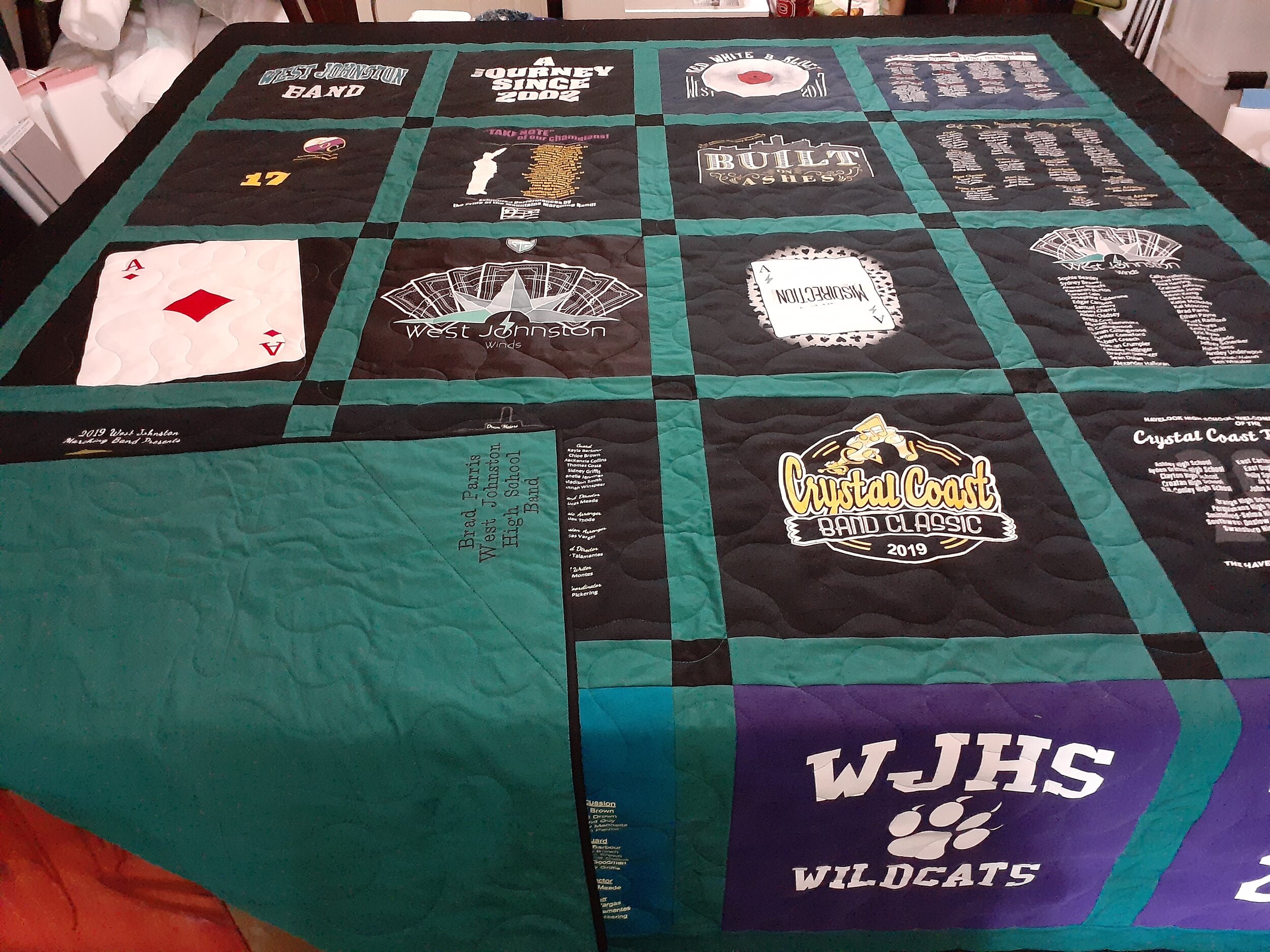“…But this novel reminds us that narrative refuses to stay put, and that the effort of telling stories only pins things down so far. In the end it is language itself that is the problematic container, it holds too much and too little at the same time.” Translating Myself and Others, Jhumpa Lahiri discussing the novel Ties
A Custom Quilt!
Whew! I would say the studio has been hopping, but honestly it has been steady, methodical progress. Lately I have been reminded of how slow the stitching process can be, never mind the creative process. And I don’t mean to say my creativity is slow, but it does have a rhythm. I like my work best when it is unhurried, consistent, and interesting. I usually have no problem with the interest because my clients bring me the best projects, and I can truly say they are all unique. I may be making a classic t-shirt quilt, but the shirts and fabrics vary. The stories of my customers are unique for certain!
I feel stressed probably twice a year—graduation season and the holidays, but I am working to build calm into those seasons, too. Everything I do requires time, patience, concentration, and precision, and no amount of need or deadlines can rush that process. As a matter of fact, I find that when I am in a hurry or feeling harried that I make mistakes and create longer, more difficult work. Sewing should never be frustrating, tedious, or maddening, and my studio is rarely—and I mean rarely—any of those emotions. I tend to laugh at my mistakes, probably because I have the skills to fix them and because I know some mistakes are leading in to a better solution.
I have talked/written before about how I like to have a variety of orders on the go. In a particular day, I don’t want to spend the whole day on one task. I try to plan different tasks to pay attention to my body and allow time for thinking and digesting a project. For instance, I do thinking tasks, like layouts and planning, when I am fresh in the morning. I try not to sew all day or stand all day, so I plan a prep of shirts (cutting, interfacing, and steam pressing) and the piecing of a quilt top for the day. The prep I know I can finish in a few hours or less, and the piecing can spill into the next day if needed.
I try to pay attention to my creative desires, too. I usually have three or four things on my “to-do” list, and I let my desire for the day dictate the order. I do try to remain cognizant that, like everyone else, I can try to avoid a certain task, and I will usually do that one first! Then I get a reward—doing the thing that is burning in my mind or making my fingers tingle—yes—my work is often a physical desire—and I am happy to be able to sew and create at will. I am also lucky that I really like all of the aspects of my job, from pressing freshly washed fabric to binding finished quilts. I do find a quiet joy in all of those activities.
One more row to go on the pixellation quilt…now I just have to decide how to quilt it while I work on that row!
Lately the studio abounds with colorful squares for a pixellation quilt (I’ll do a blog post for that process!) and a double-sided t-shirt quilt with a certain vision desired by the client. Pillows and custom quilting and sweet custom quilts are in the works, too. Also, I have been meeting with clients with new projects and of course graduation quilt projects! The studio is a lively place, where the process may be slow, but the product is always worth it!
Sending Quilting Love,
Ginger
Coming Next Time: Pixellation? Memory Quilts? Is there anything you would like me to write about?
I am Reading: I am still enjoying The Old Curiosity Shop by Dickens, and I am reading the second novel in the Chief Inspector Gamache mystery series by Louise Penny. I am also reading several nonfiction books and books of poetry, as usual. Do you have reading recommendations?








